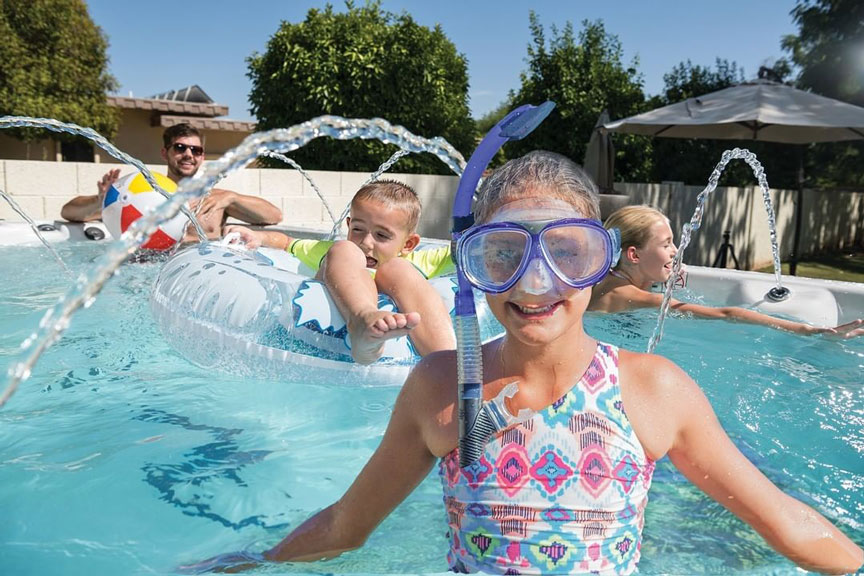
The Surprising Do’s and Don’ts of Hot Tub Ownership
A back garden hot tub can be a luxurious and therapeutic addition to your home, providing a serene oasis for relaxation and rejuvenation.
Imagine soaking in warm, bubbly water, surrounded by the soothing sounds of nature.
Whether you’re seeking relief from stress, muscle aches, or simply a moment of tranquillity, a hot tub offers a multitude of benefits.
However, to ensure a safe and enjoyable experience, following proper guidelines and adherence to best practices is essential.
By understanding the dos and don’ts of hot tub ownership, you can maximise its benefits and minimise potential risks.
From maintaining proper water chemistry to ensuring safety precautions, this comprehensive guide will equip you with the knowledge needed to make the most of your hot tub.
The Do’s of Hot Tub Ownership
1. Have Regular Hot Tub Maintenance
Consistent hot tub maintenance is crucial for a clean and healthy hot tub.
Without regular upkeep, the water can quickly become a breeding ground for bacteria, algae, and other contaminants, which can lead to skin infections and respiratory issues.
Regularly check and adjust the water chemistry to maintain the right balance of pH, alkalinity, and sanitiser levels, as the improper balance can cause skin irritation and corrosion of the tub’s components.
Cleaning the filters ensures that debris and particles are removed efficiently, preventing clogging and reducing strain on the pump and heater. Maintaining your hot tub in Autumn is a key time for this.
Draining and refilling the tub as needed, typically every three to four months helps prevent the build-up of dissolved solids that can affect water clarity and quality.
Always follow the manufacturer’s guidelines for specific maintenance schedules to ensure the longevity and performance of your hot tub
What Should be the pH level of a Hot Tub?
pH levels indicate the acidity or alkalinity of water, measured on a scale from 0 to 14, with 7 being neutral.
For your hot tub, it’s important to maintain a pH level between 7.2 and 7.6.
If the pH falls below 7.2, the water becomes too acidic, which can lead to skin irritation, eye discomfort, and reduced effectiveness of sanitisers. Excessive acidity may also cause costly damage to hot tub components.
On the other hand, a pH level above 7.8 can lead to problems similar to high alkalinity, such as scale formation, foam, and cloudy water.
Maintaining the correct pH balance ensures a more comfortable experience for bathers, prevents scale and calcium deposits, and protects your hot tub from corrosion.
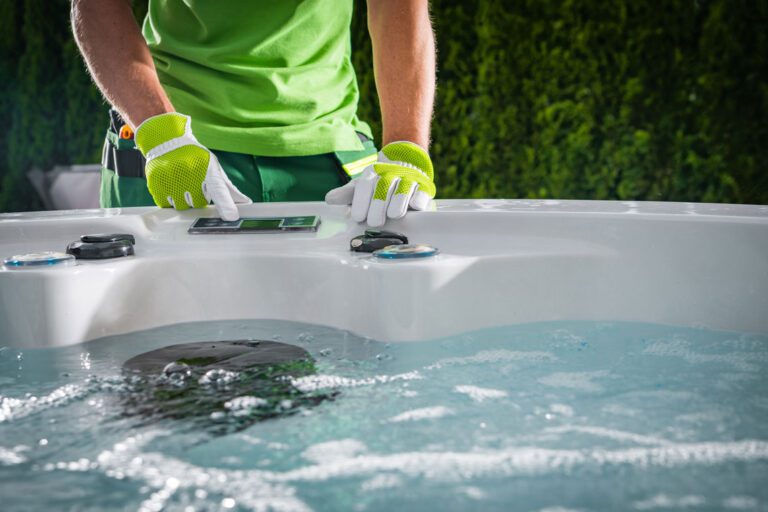
2. Check Your Hot Tub Water Temperature
Before entering the hot tub, always check the water temperature to ensure it’s within a safe range of 100-104°F (38-40°C).
Temperatures above this range can cause overheating, increasing the risk of heat stroke, dizziness, or fainting, particularly for individuals with certain health conditions.
Overly hot water can also damage the skin by stripping away natural oils, leading to dryness or burns.
A properly regulated temperature ensures comfort and maximises the hot tub’s therapeutic benefits, such as muscle relaxation and improved circulation.
3. Limit Your Hot Tub Soaking Time to 20mins
While hot tubs can be incredibly relaxing, it’s important to limit your soak time to 15-20 minutes.
Prolonged exposure to hot water can lead to dehydration as your body loses fluids through sweating.
Extended soaking can also lower blood pressure and cause lightheadedness or fainting when standing up suddenly.
For those with heart conditions or other medical concerns, shorter sessions are particularly advisable.
To get the most out of your hot tub without overdoing it, take regular breaks between sessions if you plan on spending more time in the water.
4. Keep Hydrated in your Hot Tub
Drinking plenty of water before, during, and after your hot tub sessions is essential to prevent dehydration.
The combination of heat and water can cause your body to sweat more than you realise, leading to a loss of fluids.
Even though you’re surrounded by water, your body is still at risk of dehydration, which can result in headaches, dizziness, and nausea.
Keep a bottle of water nearby, and take sips regularly to maintain hydration levels, ensuring a safe and comfortable experience.
5. Avoid Alcohol or Drugs in your Hot Tub
Alcohol and drugs can impair your judgment and coordination, making accidents more likely when using a hot tub.
The relaxing effects of hot water combined with alcohol or drug consumption can amplify these substances’ effects, leading to increased drowsiness, reduced awareness, and a higher risk of drowning or slipping when entering or exiting the tub.
Additionally, the combination of hot water and alcohol can exacerbate dehydration, leading to more severe health consequences.
6. Shower Before and After Your Hot Tub
Showering before entering the hot tub helps remove dirt, oils, and lotions from your skin, which can otherwise contaminate the water and reduce the effectiveness of sanitisers like chlorine or bromine.
Keeping the water cleaner minimises the need for additional chemicals and reduces wear on the filtration system.
Showering afterwards is equally important to rinse off any residual chemicals that could irritate your skin or cause dryness.
This practice also helps maintain overall water quality and prolongs the time between necessary water changes.
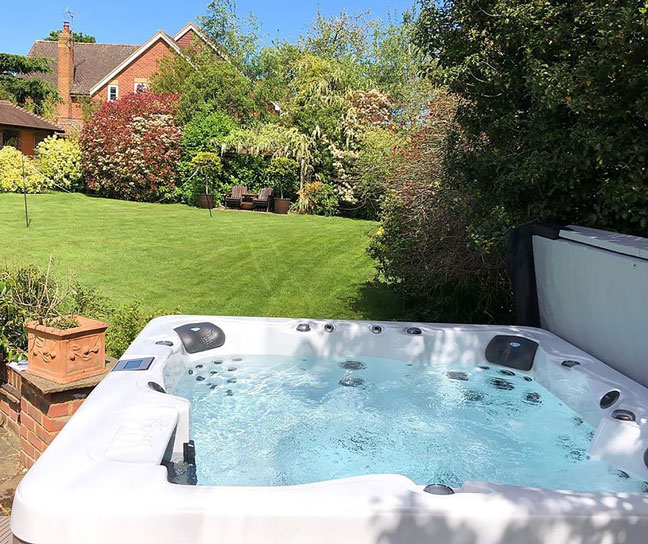
7. Use a Hot Tub Cover
Always use a hot tub cover when not in use to conserve heat, reduce energy consumption, and prevent debris and contaminants from entering the water.
A well-fitting cover can significantly reduce the amount of energy needed to keep the water at a comfortable temperature by minimising heat loss.
It also serves as a safety feature, preventing children or pets from accidentally falling into the tub.
Regularly check your cover for wear and tear, and replace it if necessary to ensure it continues to provide adequate protection and insulation.
8. Avoid Eating Before or After the Hot Tub
Eating a heavy meal before or after using a hot tub can lead to discomfort or digestive issues.
The hot water increases blood flow to the skin and extremities, which can reduce the amount of blood available for digestion, potentially leading to nausea or bloating.
It’s best to wait at least an hour after eating before getting in the hot tub, and to avoid heavy or greasy foods that are harder to digest.
If you feel hungry after your soak, opt for a light snack instead of a large meal.
9. Be Cautious with Children in the Hot Tub
If you have children, supervise them closely around the hot tub.
The water depth and temperature can pose significant risks, including drowning and burns.
Teach them about the dangers of hot water and ensure they are never left unattended.
For younger children, consider using hot tub safety barriers and keep the temperature lower than the recommended maximum to reduce the risk of overheating.
Always enforce strict rules about safe hot tub behaviour for kids. and make sure children understand the importance of following them.
10. Check for Leaks
Regularly inspect your hot tub for signs of leaks, such as wet ground or puddles around the base.
Even small leaks can lead to significant water loss over time, increasing your water bill and potentially causing damage to the hot tub’s structure or surrounding area.
Promptly address any leaks by contacting a professional for repairs, as untreated leaks can lead to more extensive damage, requiring costly repairs or even replacement of the hot tub.
Regular inspections also help you catch other potential issues early, ensuring the longevity and efficiency of your hot tub.
The Don'ts of Hot Tub Ownership
1. Don’t Overcrowd your Hot Tub
Avoid overcrowding the hot tub, as too many people can raise the water temperature and make it uncomfortable for everyone.
Packed hot tubs may occur over school holidays with teenagers taking advantage of someone’s back garden spa.
Overcrowding also puts additional strain on the filtration and heating systems, leading to increased wear and tear and potentially shortening the lifespan of your equipment.
Additionally, overcrowding can increase the likelihood of accidents or injuries as people move around in a confined space. To maintain a pleasant and safe environment, adhere to the manufacturer’s recommended capacity for your hot tub.
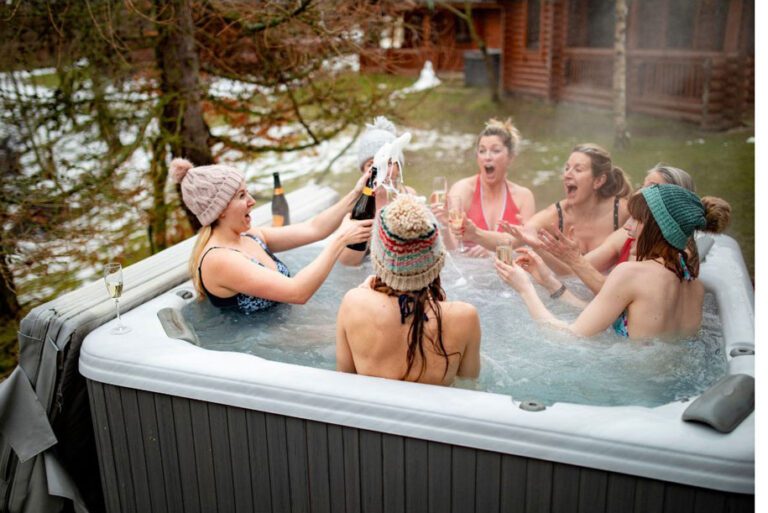
2. Don’t Use Harsh Chemicals in your Hot Tub
Avoid using harsh chemicals or cleaning products that are not specifically designed for hot tubs.
These substances can irritate your skin, damage the tub’s components, and negatively impact water quality.
Hot tub-safe chemicals are formulated to dissolve quickly and maintain the appropriate pH balance, ensuring the water remains safe and comfortable for users.
Harsh chemicals, on the other hand, can cause corrosion, staining, or buildup that can be difficult to remove.
Always use products recommended by your hot tub manufacturer to protect your investment and ensure a safe soaking experience.
3. Don’t Swim in the Hot Tub
While it may be tempting, swimming in a hot tub can be dangerous.
The water is not intended for swimming, and the confined space makes it easy to bump into the sides, causing injuries.
Hot tubs are designed for soaking and relaxation, with water jets positioned to target specific areas of the body.
Engaging in vigorous activities like swimming can disrupt the water’s flow, reduce the effectiveness of the jets, and increase the risk of slipping or falling.
Save swimming for a swimming pool or swim spa, and use the hot tub for its intended purpose.
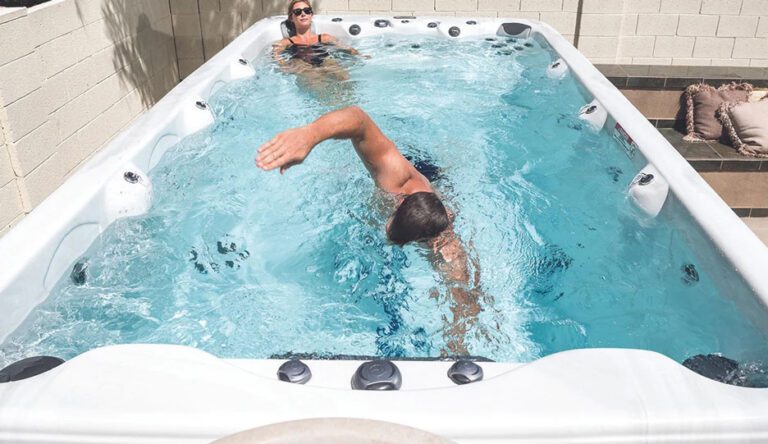
4. Don’t Use Electrical Devices in your Hot Tub
Never use electrical devices, such as hair dryers or phones, near the hot tub, as this poses a serious risk of electrocution.
Water and electricity are a dangerous combination, and even a small amount of moisture can cause a device to malfunction, potentially leading to injury or death.
To stay safe, keep all electrical devices at a safe distance from the hot tub, and consider using waterproof or water-resistant devices if necessary.
If you need to use a device while soaking, opt for battery-operated or wireless options to minimise risk.
5. Don’t Enter a Hot Tub if Pregnant
Pregnant women should consult with their doctor before using a hot tub, as excessive heat can affect the developing fetus.
Prolonged exposure to high temperatures can raise the mother’s core body temperature, which may lead to hyperthermia—a condition that can cause complications such as neural tube defects or miscarriage, especially during the first trimester.
If your doctor approves hot tub use, keep the water temperature below 100°F (37.8°C) and limit your time in the tub to no more than 10 minutes to reduce the risk of overheating.
6. Don’t your Hot Tub if Injured or ill
Individuals with certain medical conditions, such as heart problems or high blood pressure, should consult with their doctor before using a hot tub.
The hot water can cause blood vessels to dilate, leading to lowered blood pressure and increased heart rate, which can be dangerous for those with cardiovascular issues.
Similarly, if you have open wounds, skin infections, or other injuries, soaking in a hot tub can exacerbate these conditions, delay healing, or spread infection.
Always prioritise your health and seek medical advice if you’re unsure whether it’s safe for you to use a hot tub.
7. Don’t Leave the Hot Tub Unattended
Never leave the hot tub unattended, especially if children or pets are nearby.
Even if the hot tub is covered, accidents can happen, such as a child climbing onto the cover and falling in.
Unattended hot tubs can also be a hazard for pets, who may be curious about the water and attempt to jump in.
To prevent accidents, always ensure the hot tub is securely covered and locked when not in use, and keep the area around the hot tub off-limits to unsupervised children and pets.
8. Don’t Use if Under the Influence
Do not use a hot tub if you are under the influence of alcohol or drugs.
These substances can significantly impair your judgment, coordination, and reaction time, increasing the risk of accidents such as slipping, falling, or even drowning.
The combination of heat and intoxication can also lead to dangerous dehydration, as both alcohol and hot water can cause your body to lose fluids more rapidly.
Additionally, alcohol and drugs can lower your body’s ability to regulate temperature, making it harder to recognise when you’re overheating.
To ensure a safe and enjoyable experience, always wait until you’re sober before using the hot tub.
9. Don’t Use Hot Tub Covers as a Platform
Never stand or jump on the hot tub cover, as it is not designed to support weight and can collapse under pressure.
Hot tub covers are primarily intended to insulate the tub and keep debris out, and their structural integrity can be compromised if subjected to heavy loads.
Walking or jumping on the cover can lead to cracks, tears, or complete failure, which not only reduces the effectiveness of the cover but also poses a safety hazard.
If the cover breaks while someone is standing on it, they could fall into the hot tub and suffer injuries.
Always treat the cover with care, and ensure it is used only for its intended purpose.
10. Don’t Ignore Hot Tub Maintenance
Neglecting regular maintenance can lead to a host of problems, including algae growth, equipment failures, and reduced water quality.
When maintenance is ignored, the water can become cloudy or discoloured, indicating an imbalance in water chemistry or the presence of contaminants.
Over time, this can result in corrosion of the hot tub’s components, leading to expensive repairs or even the need for a complete replacement.
Algae growth is another concern, as it can make the surfaces of the hot tub slippery and hazardous, as well as contribute to an unpleasant odour.
Regular maintenance is not only essential for keeping the water clean and safe but also for ensuring the longevity and efficiency of your hot tub.
Establish a routine maintenance schedule, and don’t hesitate to seek professional help if you encounter issues that are beyond your ability to fix.
Do's and Don'ts of Hot Tubs Ownership Explained
By following these dos and don’ts, you can enjoy a safe and enjoyable experience in your personal hot tub.
Remember, responsible hot tub ownership is essential for maintaining a healthy and enjoyable environment for everyone.
Additionally, consider consulting with a hot tub professional for personalised advice and guidance.
With proper care and attention, your hot tub can provide countless hours of relaxation and enjoyment.
So, have a dip and experience the therapeutic benefits of a hot tub, a luxurious addition to your home.